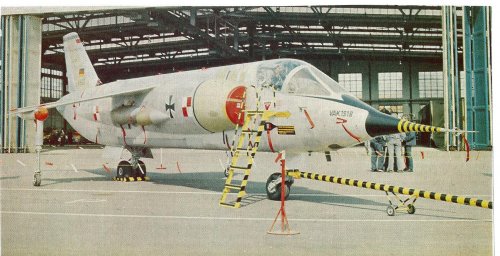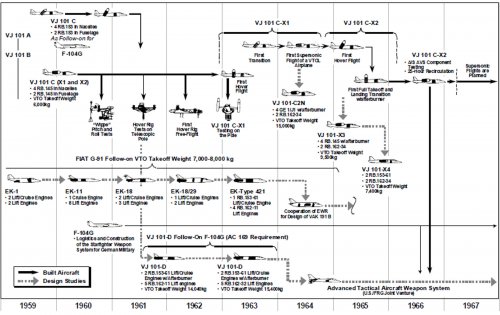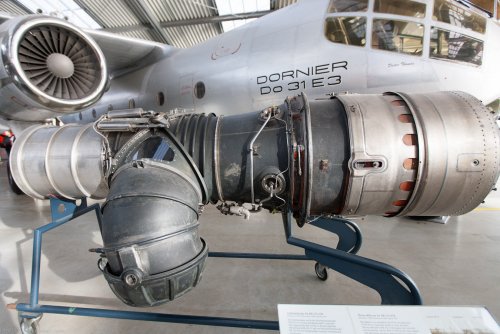You are using an out of date browser. It may not display this or other websites correctly.
You should upgrade or use an alternative browser.
You should upgrade or use an alternative browser.
VAK 191, Development, Variants & Prototypes
- Thread starter Jemiba
- Start date
-
- Tags
- cold war west germany
blackkite
Don't laugh, don't cry, don't even curse, but.....
- Joined
- 31 May 2007
- Messages
- 8,286
- Reaction score
- 5,851
Hi!
VAK191B (initial design was Focke Wulf FW 1262)was to be a nuclear capable bomber.
http://www.airwar.ru/image/idop/xplane/vak191/vak191-2.gif
Competitors were as follows.
①P.1127(designated VAK191A for the competition), later P.1170?
②EWR's EK421(designated VAK191C)
③Fiat G95/4(designated VAK191D)
VAK191B pdf
http://www.fzt.haw-hamburg.de/pers/Scholz/dglr/hh/text_2007_03_22_VAK191.pdf
VAK191B (initial design was Focke Wulf FW 1262)was to be a nuclear capable bomber.
http://www.airwar.ru/image/idop/xplane/vak191/vak191-2.gif
Competitors were as follows.
①P.1127(designated VAK191A for the competition), later P.1170?
②EWR's EK421(designated VAK191C)
③Fiat G95/4(designated VAK191D)
VAK191B pdf
http://www.fzt.haw-hamburg.de/pers/Scholz/dglr/hh/text_2007_03_22_VAK191.pdf
Attachments
-
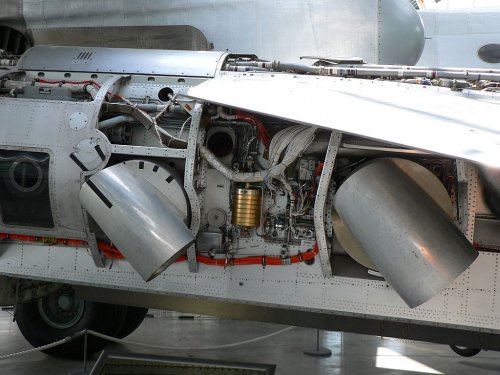 RB193 ENGINE.jpg141 KB · Views: 158
RB193 ENGINE.jpg141 KB · Views: 158 -
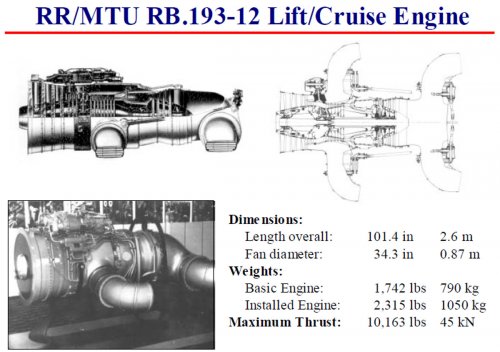 RB193_ENGINE_FOR_VAK191B.jpg183 KB · Views: 171
RB193_ENGINE_FOR_VAK191B.jpg183 KB · Views: 171 -
 EK421.jpg22.8 KB · Views: 191
EK421.jpg22.8 KB · Views: 191 -
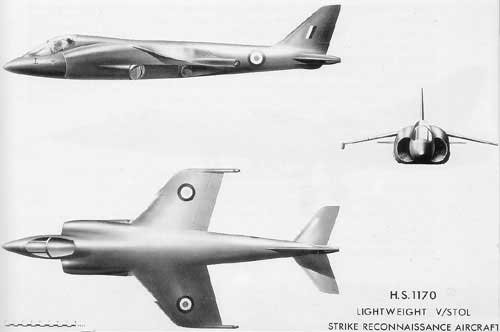 HAWKER SIDDELEY P1170 VAK191A.jpg11.1 KB · Views: 275
HAWKER SIDDELEY P1170 VAK191A.jpg11.1 KB · Views: 275 -
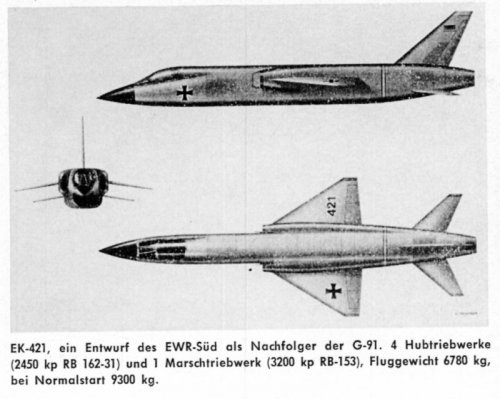 EK-421 - Copy.jpg101.2 KB · Views: 288
EK-421 - Copy.jpg101.2 KB · Views: 288 -
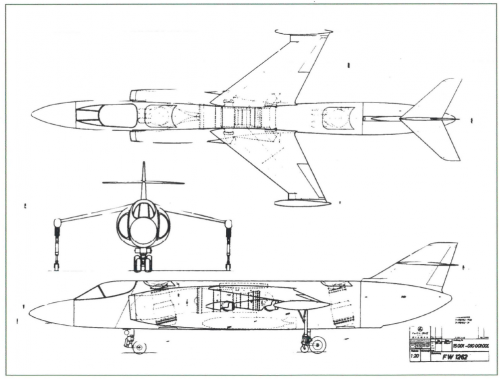 Focke-Wulf_FW1262_VTOL_Project_Schematic.PNG283.6 KB · Views: 306
Focke-Wulf_FW1262_VTOL_Project_Schematic.PNG283.6 KB · Views: 306 -
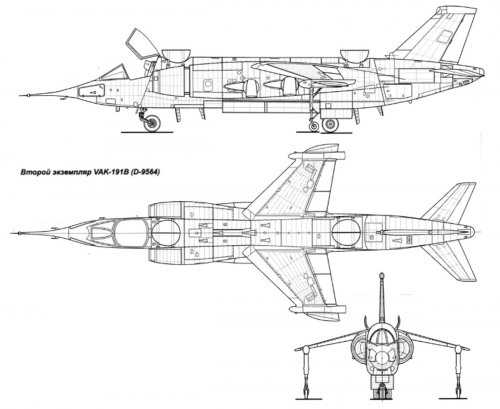 VAK191B.jpg132.6 KB · Views: 317
VAK191B.jpg132.6 KB · Views: 317 -
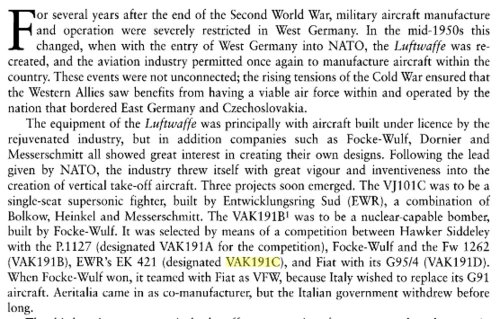 VAK191.jpg181.6 KB · Views: 267
VAK191.jpg181.6 KB · Views: 267
blackkite
Don't laugh, don't cry, don't even curse, but.....
- Joined
- 31 May 2007
- Messages
- 8,286
- Reaction score
- 5,851
- Joined
- 9 October 2009
- Messages
- 19,832
- Reaction score
- 10,320
The Italian Navy were also very interested in the VAK-191B:
EDIT: Overlooked this post earlier in the thread:
EDIT: Overlooked this post earlier in the thread:
Warship 2007
Search For A Flattop; The Italian Navy and the Aircraft Carrier 1907 - 2007
Enrico Cernuschi and Vincent P. O'Hara
"During the following decades the Navy expanded its land-based helicopter groups and improved them with new, more powerful machines, despite the budgetary crises of the 1960's which caused the cancellation of the order for Italia and, later, Trieste - a proposed evolution of the Vittorio Veneto design with the capability to embark a new VTOL jet attack plane, the VAK-191, a contemporary of the British P.1227 Harrier proposed by a German-Italian consortium."
The next paragraph mentions Trieste being cancelled in 1969.
Anyone know anymore about shipbourne VAK-191's?!
Regards,
Barry
- Joined
- 9 October 2009
- Messages
- 19,832
- Reaction score
- 10,320
The VAK-191B would probably have been acquired if the European Defence Force had come to fruition. There were plans for three additional Vittorio Veneto-class cruisers as part of the naval element of the EDF, as well as the Vittorio Veneto herself being assigned.
The VAK-191 looks like some weird hybrid of Harrier and Forger... with all their flaws and no advantage.
"hey let's build a Harrier with a Pegasus look alike but much smaller engine with a smaller compressor so that it can get supersonic"
"Good idea, alas the engine is not powerful enough for VTOL"
"Well then let's steal the Forger two lift jets and voilà, problem solved"
"Yeah but one behind the cockpit, as in the Forger, but the other one in the tail. This is more balanced."
Hot gas re-ingestion issues must have been pretty fun, with one lift-jet fore, another aft, plus two rotating exhausts also on the rear.
The Forger is certainly much maligned for good reasons, but the VAK-191B... the Germans were wise to abandon that one.
Had they dropped the lift jets, they would have had a supersonic-but-non-VTOL (STOL only) Harrier little brother.
"hey let's build a Harrier with a Pegasus look alike but much smaller engine with a smaller compressor so that it can get supersonic"
"Good idea, alas the engine is not powerful enough for VTOL"
"Well then let's steal the Forger two lift jets and voilà, problem solved"
"Yeah but one behind the cockpit, as in the Forger, but the other one in the tail. This is more balanced."
Hot gas re-ingestion issues must have been pretty fun, with one lift-jet fore, another aft, plus two rotating exhausts also on the rear.
The Forger is certainly much maligned for good reasons, but the VAK-191B... the Germans were wise to abandon that one.
Had they dropped the lift jets, they would have had a supersonic-but-non-VTOL (STOL only) Harrier little brother.
- Joined
- 19 July 2016
- Messages
- 3,725
- Reaction score
- 2,686
THAT, might have been enough but a surplus of confidence is something none of these programs around the world lack.
What is very unnerving is that nobody thought about putting the Ryan XV-5A nose fan (driven by its jets) into a a Forger, or a VAK-191B. Or a Convair 200. The end result would have been... a proto-F-35B look alike, decades ahead.
- Joined
- 8 January 2006
- Messages
- 1,605
- Reaction score
- 676
McDD used a jet-driven lift fan in their JSF entry and, when it didn't prove out, had to revert to a separate lift engine and lost by violating the rules of the competition.What is very unnerving is that nobody thought about putting the Ryan XV-5A nose fan (driven by its jets) into a a Forger, or a VAK-191B. Or a Convair 200. The end result would have been... a proto-F-35B look alike, decades ahead.
G_eronimo
ACCESS: Restricted
- Joined
- 10 August 2021
- Messages
- 1
- Reaction score
- 0
Hello,The VAK-191 looks like some weird hybrid of Harrier and Forger... with all their flaws and no advantage.
"hey let's build a Harrier with a Pegasus look alike but much smaller engine with a smaller compressor so that it can get supersonic"
"Good idea, alas the engine is not powerful enough for VTOL"
"Well then let's steal the Forger two lift jets and voilà, problem solved"
"Yeah but one behind the cockpit, as in the Forger, but the other one in the tail. This is more balanced."
Hot gas re-ingestion issues must have been pretty fun, with one lift-jet fore, another aft, plus two rotating exhausts also on the rear.
The Forger is certainly much maligned for good reasons, but the VAK-191B... the Germans were wise to abandon that one.
Had they dropped the lift jets, they would have had a supersonic-but-non-VTOL (STOL only) Harrier little brother.
counter: "The Forger looks like some weird hybrid of a Yak36, VAK191 and Harrier?
The use of lift engines might have been a good decision.
If you do not need a more powerfull engine for forward flight, because the design goal is subsonic, 250 kg for 2 lift engines might be less than the additional weight of a bigger "Pegasus" and the higher fuel comsumption during the whole flight compared to some fuel for lift engines during VTOL-time for a minute or two.
Hot gas re-ingestion is no fun for EVERY VTOL-plane.
The VAK could easily be topped by the Do 31 with 2 Pegasus and 8 (!) additional ift engines.
That's why they "developed" forward moving VTOL-take-off and landing or the jump-start.
It also does not ruin the surface of the runway that fast.
The VJ101 for example has 4 afterburners "hitting" the runway. Even a stainless steel runway wouldn't have taken that without damage.
The thrust of the RB193 would have been developed during time, like the Pegasus too (from 49kN to 106 kN !).
So, most of these VTOL-planes have been designed with the knowledge of that time for some different tasks in mind.
The technical solutions were very interesting. Most of them "died" due to changes in military requests and not by not-fulfilling the design goals.
Uli
Similar threads
-
What if Germany went through with VTOL aircraft?
- Started by helmutkohl
- Replies: 53
-
Bofors VAK 40 S 49 (Vagn Automatkanon 40 mm Swedish model 1949), lvkv fm/49, lvkv 42
- Started by blockhaj
- Replies: 1
-
-
-
Low-cost Eurofighter alternative design
- Started by giorgio
- Replies: 3

